Although I tend to use art therapy more with individual clients, I have lately had more opportunities to use art in family therapy, leading me to think more about family-focused interventions. One of the art therapy interventions that I learned as a graduate student at Loyola Marymount University was verbal and nonverbal joint family drawings.
In Family Art Psychotherapy, Helen Landgarten proposed using this method as a standard family evaluation in the first session. In her evaluation, she would assign the family three art tasks, framing it as a game.
In the first task, the family is instructed to divide themselves into two teams (thus revealing the family alliances) and for each member to choose one color of marker to use throughout the evaluation. The teams are each asked to create one nonverbal drawing together, with no talking, writing notes, or signaling. In the second task, the entire family works together to create a nonverbal drawing. And for the third task, the entire family creates a drawing together with verbal communication allowed.
The information provided in observing these three tasks, both in the interactions of the family members and in the resulting art, can be very valuable for the therapist. For more information on what to observe and questions to process with the family, see Family Art Psychotherapy.

Non-verbal Family Drawing
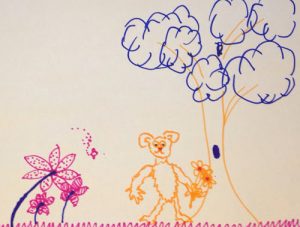
Verbal Family Drawing
I often do not follow Landgarten’s three part evaluation, instead doing the two tasks of nonverbal and verbal joint family drawings, partially because I often have only 2-3 family members in my office. And I have most often used it as an intervention after at least a few sessions, instead of as an evaluation. In my experience, the activity has led to very useful conversations with the family as we talk about what happened in the joint art-making process and how this is (or is not) similar to what happens at home.
Things to discuss can include who takes the lead and gets their way, were everyone’s ideas listened to and incorporated, did they really work together or simply create separate drawings on the same page, how do family members handle it when they cannot communicate what they want and need, was either the nonverbal or verbal drawing more successful (e.g., I have often seen the verbal drawing be less successful as talking allows for difficulties like bossiness, too much compromising and trying to keep everyone happy, or teasing and insulting).
You may also discuss if there was a significant subject theme or important symbols included. For example, some families will show themselves at home or on a favorite vacation. In discussing the drawing process, it is important to help the family connect this to their lives outside of the therapy office, talk about how people feel about these interactions, and look at what they might like to strengthen or change at home. And, although I have never assigned this as a homework assignment, some parents with younger children have had so much fun with the activity that they did more nonverbal and verbal joint drawings together at home in order to strengthen the parent-child relationship.
I would love to hear about some other favorite family interventions and plan to share some more that I use in my own work.
Carolyn Mehlomakulu, LMFT-S, ATR is an art therapist in Austin, Texas who works with children, teens, and families. For more information about individual therapy, teen and child counseling, family therapy, teen group therapy, and art therapy services, please visit: www.therapywithcarolyn.com.
This blog is not intended to diagnose or treat any mental health conditions. All directives, interventions, and ideas should be used by qualified individuals within the appropriate bounds of their education, training, and scope of practice. Information presented in this blog does not replace professional training in child and family therapy, art therapy, or play therapy.
This blog includes affiliate links (see full disclosure here). If you’d like to help support the blog without any extra cost to you, please click through on Amazon links and shop as you normally would. Your support is greatly appreciated!
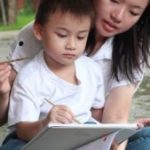
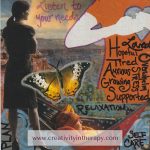
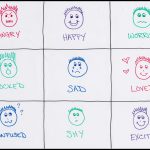

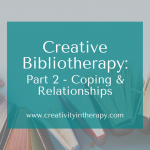
Thanks for this post, as I am always looking for expressive art activities to do with families